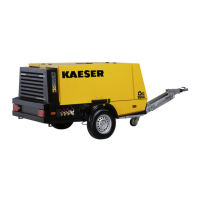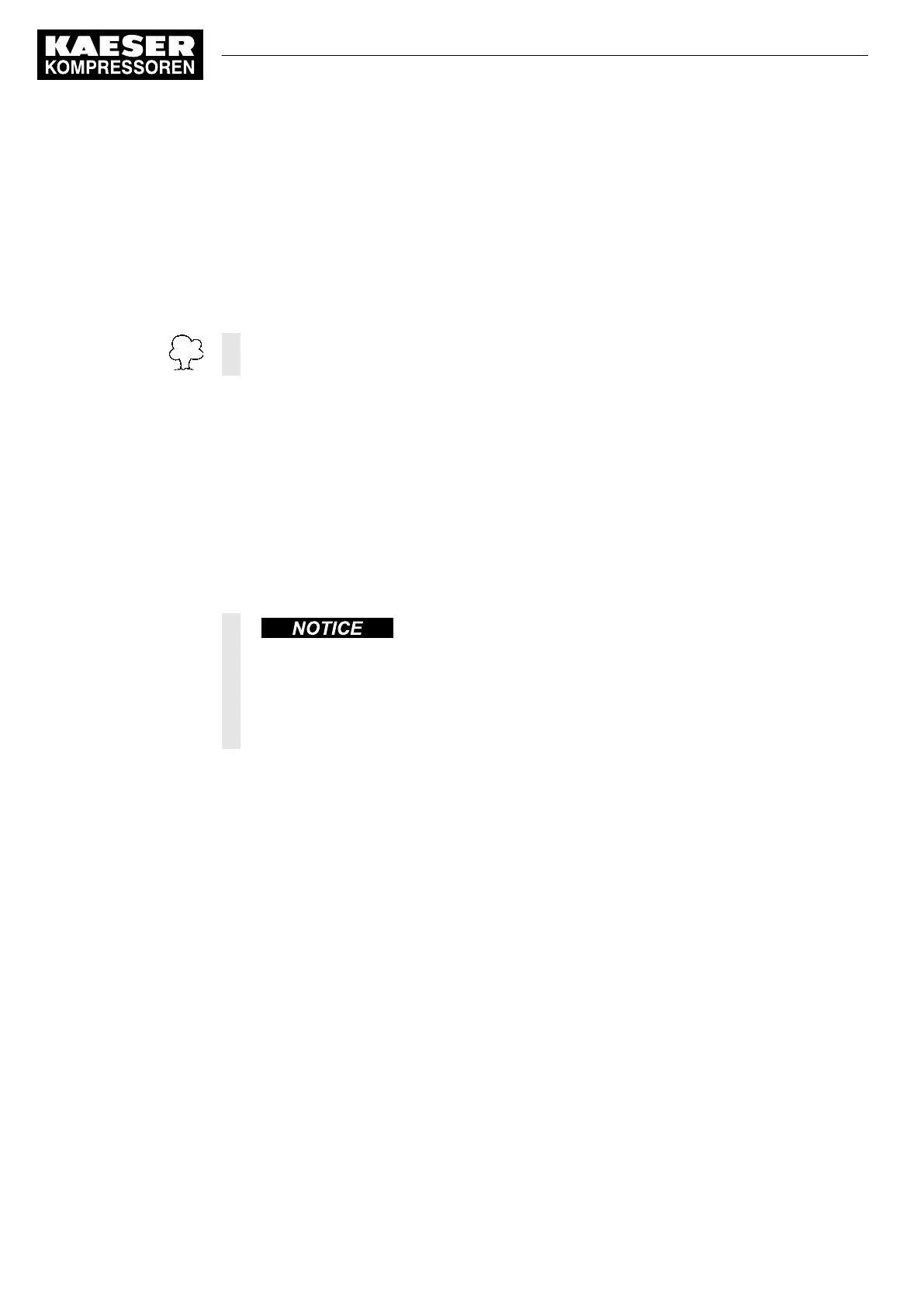7. Make sure the battery is properly secured.
8.
Close the access door.
Battery replacement:
If the battery is to be replaced, the new battery should have the same capacity, current rating and
shape as the original battery.
➤ Always replace a battery with one of the same type.
The old battery is hazardous waste and must be disposed of in accordance with local envi‐
ronment protection regulations.
10.3.10 Checking the fastening of the fuel tank
The machine is equipped with a fuel tank or tanks. These are fastened with lashing strips and
ratchets.
Precondition The machine is shut down.
The machine is standing level.
The machine is fully vented, the pressure gauge reads 0 psig.
The machine is cooled down.
All compressed air consumers are disconnected and the air outlet valves are open.
The lashing strip of the fuel tank is overly tightened.
The plastic tank can be damaged by excessive tightening of the lashing strips.
The fuel tank may burst and spill.
➤ Do not overtighten the lashing strips.
➤ Slightly hand-tighten the lashing strips.
Carry out visual check
1. Check the lashing strips for tears and fraying in the fabric, and for damages to the ratchet.
Change any damaged lashing strip immediately.
2. Check whether the lashing strips are tight with the tank and that the ratchet is closed.
If the lashing strips sits loose, or the ratchet is not closed properly, tighten the fastening.
Tightening the fastening of the fuel tank
The lashing strips are tensioned via the integrated ratchet.
The lashing strips must fit closely around the fuel tank. The tensioning force of the strips must not
exceed 10 daN (approx. 25 lbf), slightly hand-tighten only.
➤ Hand-tighten the lashing strip with the integrated ratchet and push the ratchet to the strip.
10.4 Compressor Maintenance
➤ Perform maintenance tasks according to the schedule in chapter 10.2.3.1.
10 Maintenance
10.4 Compressor Maintenance
130
Operator Manual Screw Compressor
M100
No.: 9_6999 23 USE

